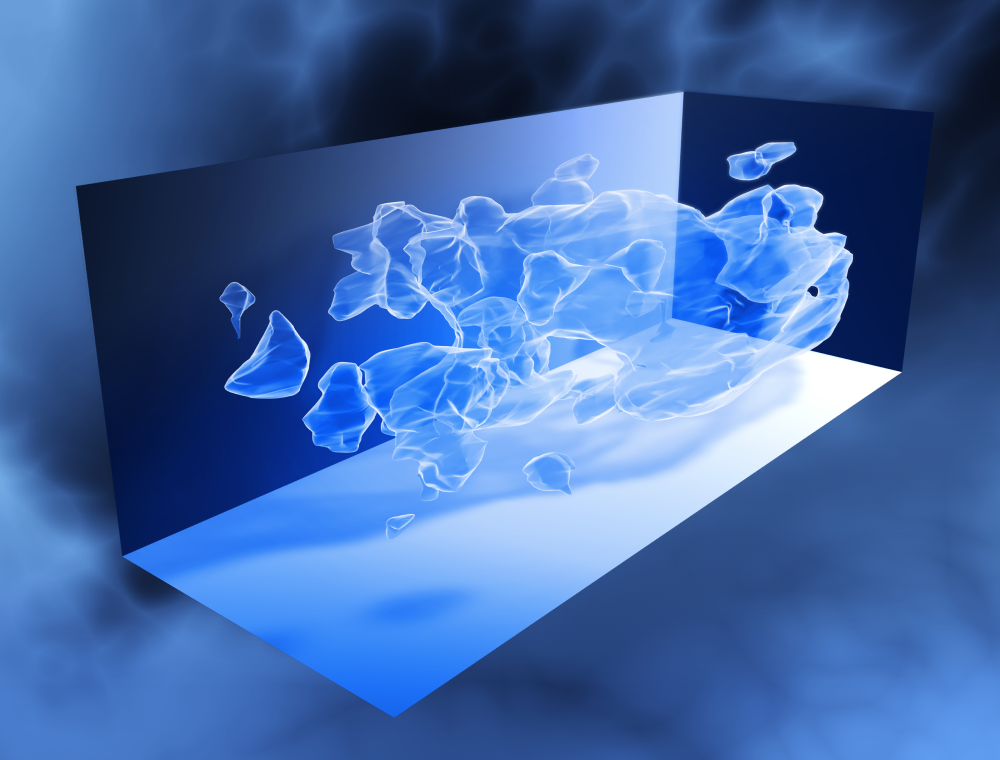Top 10 Strangest Thing in Outer Space
We've compiled this list of the universe's strangest things for you.
Because none of our Earthly methods of measuring distances will suffice in space, we'll use light-years (the rate at which light travels across space in one year) as a unit of measurement for the purposes of this article.
To give you a sense of the scales we're dealing with, light travels at a speed of 300,000 kilometers (186,000 miles) per second, which equates to 5,878,000,000,000 miles (9,461,000,000,000 km) every year.
1. Invisible Galaxy
DGSAT I is a UDG, which means it is as massive as the Milky Way but has stars that are so widely spaced that it is practically undetectable. When scientists first discovered the DGSAT 1 in 2016, researchers noticed that it was floating alone, unlike most UDGs, which are located in groups of galaxies.
The faint object's features indicate that it formed during a totally different age in the cosmos, around 1 billion years after the Big Bang, making DGSAT 1 a surviving remnant.
2. A Rectangle Nebula
Clouds of gas take make unusual shapes all around the Galaxy, though one nebula in specific is confusing astronomers with its unusual structured appearance. The Red Rectangle Nebula is 2,300 light-years distant, in the constellation Monoceros (The Unicorn).
Its unique form may be owing to the presence of two stars at its center. Shock waves from both stars might form two luminous dust cones if they hit a dusty ring encircling the duo. These two cones form a square when viewed together. The nebula also has an unusual characteristic known as 'extended red emission,' which causes its dust to glow hauntingly crimson.
3. Tabby’s Star Dimming at an alarming rate
When Louisiana State University astronomer Tabetha Boyajian and her colleagues first observed KIC 846285, they were puzzled. The object, called Tabby's star, would dim in brightness at strange intervals and for odd amounts of time, sometimes by as much as 22%.
Different explanations have been proposed, including the potential of an extraterrestrial megastructure, but most scientists currently believe the star is being darkened by an irregular ring of dust.
4. Galaxies fighting each other
Galaxies, like species on Earth, may "eat" and develop throughout time. Andromeda, the Milky Way's companion, is now feasting on one of its satellites. More than a dozen star clusters dot Andromeda, the cosmic leftovers of previous feasts. The image above is from a simulation of Andromeda colliding with our galaxy, which will happen in around 3 billion years.
5. Dark matter
Dark matter is a mysterious material that makes up 85 percent of all stuff in the observable universe. Researchers are certain of one thing, however: dark matter exists everywhere. Some scientists doubt the existence of dark matter, claiming that the puzzles it was created to address may be explained by a greater knowledge of gravity.
6. Radio signals
Scientists have been detecting ultrastrong, ultrabright radio transmissions that last just a few milliseconds since 2007. Fast radio bursts (FRBs) are mysterious bursts that appear to be coming from billions of light-years away.
7. Hoag’s object
Hoag’s Object doesn't appear to be like any other galaxy. It features an odd yellow center with a ring of youthful blue stars around it. But there's nothing in the midst. The spirals appear to have been washed away. It is unlike any other galaxy in the Universe, and astronomers are baffled as to how it came to be.
Hoag’s proposed that it may have been a small galaxy that ran through this galaxy, but there are no galaxies nearby that could have done this.
8. Planet 9
Astronomers are becoming increasingly certain that a ninth planet circling the Sun, well beyond Neptune — is dubbed 'Planet Nine'. It wouldn't be a surprise if the list of planets circling the Sun has changed.
Because of the great distance, finding it and taking a picture of it is difficult. For humans to view Planet Nine, light must travel from the Sun all the way out there and all the way back, dimming along the way.
9. Saturn's Hyperion
There are many strange moons in the solar system, including Jupiter's highly volcanic Io and Neptune's geyser-spewing Triton. Saturn's Hyperion, a pumice-stone-like uneven rock pockmarked with countless craters, probably takes the lead as the strangest-looking. Hyperion was also charged with a "particle beam" of static electricity pouring out into space, according to NASA's Cassini mission, which visited Saturn between 2004 and 2017.
10. Rogue planet with auroras
Rogue planets are planets that have been swept away from their host star by gravitational pushes. SIMP J01365663+0933473, an object 200 light-years away with a magnetic field 200 times stronger than Jupiter's, is one of the most unusual planets. This planet is powerful enough to cause glowing auroras in its sky, which radio telescopes can view.
Last words
These are just 10 of the strangest things in space. Let’s stress that we have no clue what the actual universe is or how big it really is. We only know it has to be at least 14 trillion light-years in diameter.
If you enjoyed these thoughts on the top 10 strangest things in space, feel free to give a comment below and check out our Discord server to talk with like-minded people.










